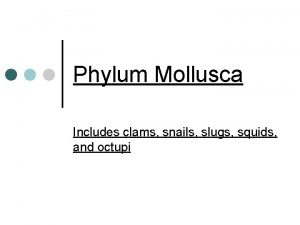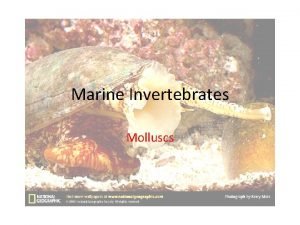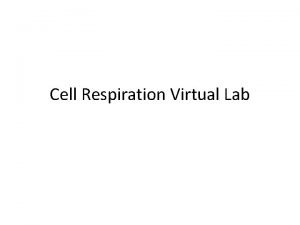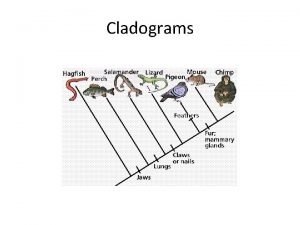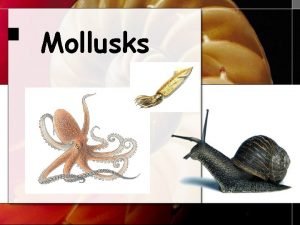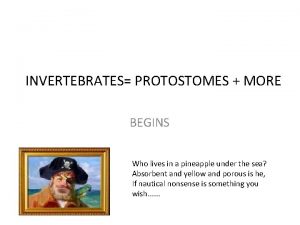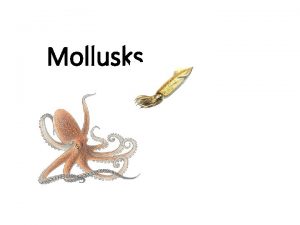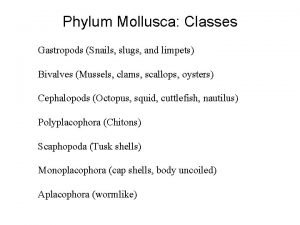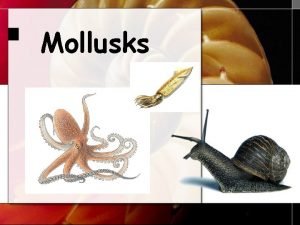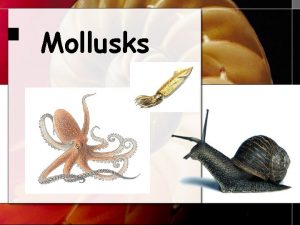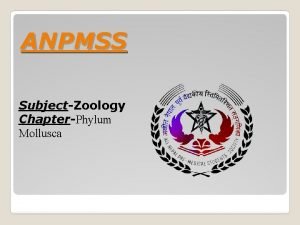MOLLUSCA Squids and slugs and snails oh my











- Slides: 11

MOLLUSCA Squids, and slugs, and snails, oh my. . .

INCLUDES: Slugs Snails Squids Clams Oysters Scallops Albalones Conches Periwinkles Whelks Limpets Cowries Cones Octopi Cuttlefish Nautili Marine animals Freshwater living animals Terrestrial animals Sessile animals Mobile animals


UM. . . WHAT DO ALL THESE HAVE IN COMMON? All have BILATERAL SYMMETRY All are COELOMATES All have TUBE-IN-TUBE digestive systems All have a MUSCULAR “FOOT” – Used for mobility and/or grabbing hold of food All have a MANTLE – An outside membrane that protects the mollusk. May secrete a shell.

CLASSES OF MOLLUSCA Gastropods – Snails, Slugs, Abalones, Conches, Periwinkles, Whelks, Limpets, Cowries, Cones Bivalves – Clams, Oysters, Mussels, Scallops Cephalopods – Octopus, Squid, Cuttlefish, Nautilus

GASTROPODS Largest class of Mollusks! Contains 80, 000 species! Use their muscular foot to move around Feed by using their teethed tongue-like radula to drill into an dismantle food Can be herbivores, predators, scavengers, parasites Marine are usually separate sexes, terrestrial species are often hermaphrodites In land species, often use “Love Darts” to get in the mood!

GASTROPOD SYSTEMS Nervous system: Ganglia, eyes, and advanced olfactory (smell) organs Circulatory system: Open circulatory system with a small heart which pumps around hemolymph Respiratory system: Gills in marine species, primitive lung in the mantle of terrestrial species Excretory system: Contain Nephridia, which filter wastes from the coelom and excrete out the mantle

BIVALVES Have two shells, made of calcium carbonate, held together by a ligament and controlled by muscles. No developed head, do not use a radula. Filter feeders! Push water through gills, which use cilia to sort out food and push it too the mouth. Most have separate sexes (some are hermaphrodites) and expel sperm/eggs into the water external fertilization

BIVALVE SYSTEMS Nervous System: Very simple, basically a nerve net but with a few scattered ganglia, have light detectors Circulatory System: Open, a three chambered heart pumps hemolymph around the body cavity Respiratory System: Use Gills Excretory System: Use Nephridia

CEPHALOPODS Foot has evolved into tentacles which can capture and hold prey Food is then bitten apart with a beak, and torn to digestible pieces by the radula Move about using a “jet ski” like ability to shoot water out of their siphons Some can also expel a dark fluid when threatened Reproduce with separate sexes, often die afterwards Live (grow) fast, die young

CEPHALOPOD SYSTEMS Nervous System: Most intelligent invertebrates! Large brains and sophisticated nerve fibers. Very acute vision and hearing. Circulatory System: Closed circulatory system, with one heart for the body and two for the gills Respiratory System: Use Gills Excretory System: Use Large Nephridia
 Life cycle of slug
Life cycle of slug Invertebrates including snails slugs and mussels
Invertebrates including snails slugs and mussels Invertebrates including snails slugs and mussels
Invertebrates including snails slugs and mussels Cell respiration virtual lab
Cell respiration virtual lab Leatherleaf slugs
Leatherleaf slugs Cladogram human
Cladogram human Hedgehog food web
Hedgehog food web Mystery snail slime
Mystery snail slime Phylum mollusca, class gastropoda
Phylum mollusca, class gastropoda Are snails bugs
Are snails bugs Porifera
Porifera Phylum mollusca homework and study guide #1
Phylum mollusca homework and study guide #1

